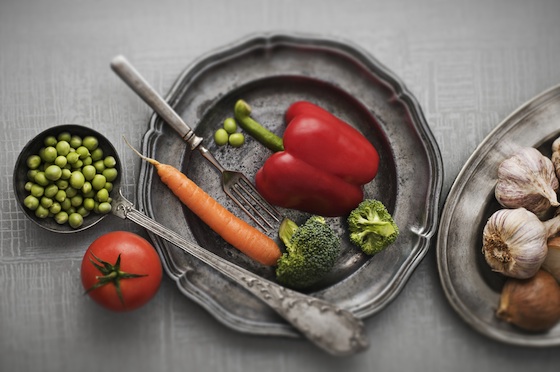Even the US Customs guy at the New Jersey airport gave me an approving nod: “A technology for hydroponics?” He flips over my business invitation from the NY company to see if there wasn’t something inside. “Well, you know, it’s still,” in a fake finger-wagging voice, “…illegal here?” he says, waiting for my reply.
There was a long line behind me: “I am doing it to save the world – so people can grow better food.”
Was it a trap? The Canadian in me wondered. I get the stamp and I am in New York City. My startup has landed. And ain’t that America!
When I tell people I am creating hardware so hydroponics can be open to everyone I get one of four reactions: the environmentalists give me high-fives, the high-tech geeks crash their operating systems (girl+blond+device=what the ?$%!!), the potheads ask me when they can buy it, and the rest of the world scratches their head.
Hydro-what?
I am building a device to make hydroponics more accessible, so it’s easy for everyone to balance water chemistry. No, not for you to start up your own “Weeds” reality show, but so that we can help America grow better food that’s more nutritious, with less environmental impact.
Hydroponics is nothing I’ve invented. It’s a system used by Asia to grow rice, or theBabylonians for their ancient hanging gardens. You don’t need dirt to grow food, just plenty of aerated water, and a nutrient solution. Some research bodies like the Food and Agriculture Organization at the United Nations argue that it is the world’s only alternative to conventional farming. Not as a replacement, but important as our world’s population swells by the billions. And as we continue to cause climate change, and face drought.
When I speak with chemical companies they know it’s a young industry growing at a fast clip.
But back to people: Imagine young girls in those new STEM (Science, Technology, Engineering, Math) programs that everyone in Education is talking about. Hydroponics could connect food to STEM so that girls can learn math, chemistry, engineering, physics, farming and nutrition at one tasty go.
Hydroponics uses up to 90% less water than soil farming, and you can grow high-density, high-value organic food literally anywhere, year round.
And if you do it right, with the right mix of nutrients, with the right seeds, and at the right pH, well you’re going to grow food that Five Star restaurants want to buy. Those were William Texier’s early customers decades ago in California, years before Texier wrote the book on hydroponics and became the CEO of Europe to the world’s biggest hydroponics nutrient company, General Hydroponics.
But how do you do it right? Soil farming and water farming are not the same. If we can get that magical number to make it super efficient and cost-effective, more people will do it. Just like buying into solar panels.
The environmental benefits to hydroponics farming at home and at large scale seem to be all there. But those metrics aren’t everything for the bottom line. Many who try it at home or for business fail or complain about the taste (see the comments in this NY Times article).
Texier is now based in France but was back to California, seized by a drought, when I got hold of him. When I told Texier that people find hydroponics food dry and a bit bland (a common complaint), he says bluntly: “It’s not because of hydroponics. It’s because of you.”
Double the vitamins, double the taste
With the right nutrients and the right growing conditions, you can get food that’s “200 percent more of everything,” he tells Green Prophet.
Food that’s twice as tasty, and packed with double the amount of vitamins and nutrients, based on lab analyses he’s done: “This should be the first and most important fact when you talk about hydroponics,” he says. “And that means that food with twice the nutritional value should be sold at twice the price.”
Texier’s not convinced yet that hydroponics will save California’s water. That it uses 90% less water is very generalized, Texier says: “When you are dealing with living organisms and complex chemistry,” water use can be hard to pin down. It may be less, but it really depends what you are growing and where, he tells me. And it’s important to take into consideration the power use needed for lighting, if done indoors.
But big US gardening companies see where hydroponics is headed. Scotts Miracle-Gro, that which we see advertised in Lowes’ fliers, recently bought General Hydroponics for an estimated $130 million USD. And you can already findhydroponics systems online at Home Depot.
So US Customs guy: please don’t ask. I will be coming back to New York next week to continue my quest and to grow my my startup business. Yes, my laptop is full of data that comes from the now legal (in some US States) cannabis business but that’s research which is going to help me feed the planet.
Who’s growing what, where, for how much? What food can be grown with the least amount of water for the best taste? That’s my challenge: to connect environmentalists, with high-tech geeks, with know-how from the medicinal cannabis growers to everyone – and their food.





Growing plants vertically is a great practice, ans will hopefully catch on. About the bland taste, it’s because plants are missing what peer reviewed scientific papers call “the organic effect”. Organic matter, in soil gradually release micro nd macro nutrients, and provide plant root cells with the ideal environment (porous soil rich in oxygen). My paper in Soil Biology and Biochemistry was about earthworm casts as fertilizer! Mimmicking this effect with synthetic fertilizer is not ecologically sound, and can be costly. Instead, one can simply grow vertically in soil. I created the structure needed here: urbanfarmsorganic.com/plantpods.html , and it can automatically sub irrigated. This means water is not pumped ans recirculated, which causes nutrient to leach. Subirrigation prevents water loss too; the soil wicks the water it needs from a reservoir, and no more.
Hala